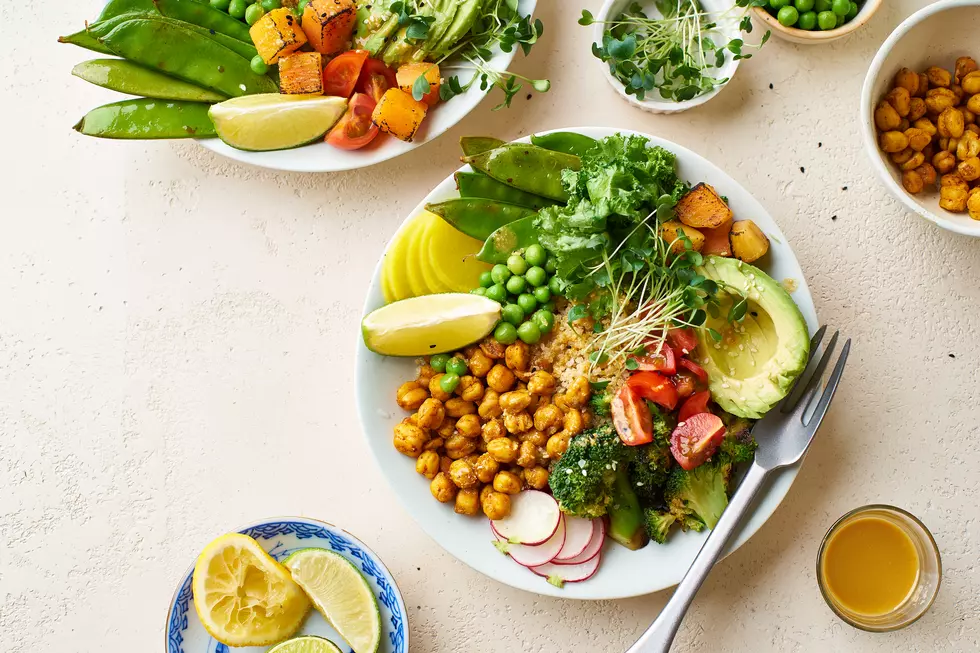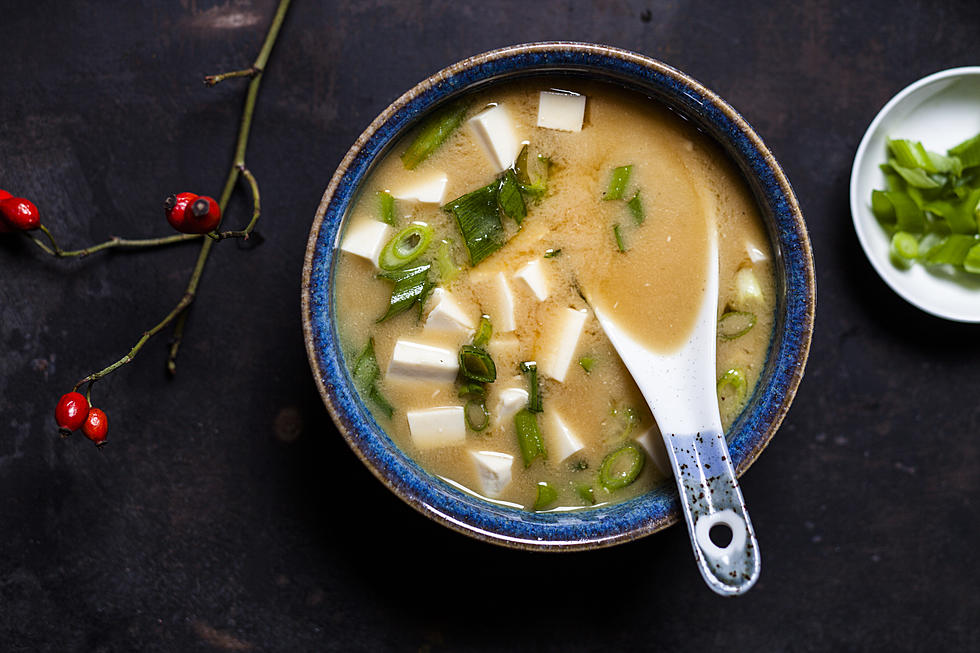
How to Eat Plant-Based Even if You Have Allergies
To many, being vegan can seem pretty restrictive. On top of that, having unique food allergies, intolerances and sensitivities can make it appear even more complicated. Here’s the good news: Nowadays, there are so many brands that offer allergy-friendly products due to the continuous rise in food allergies. And let’s not forget that shopping the perimeter of your local grocery store is healthiest since it allows you to avoid the majority of foods that would likely cause a reaction.
You may also be thinking, “But how am I supposed to get in protein if I have a soy or nut allergy?” Trust me, it’s possible! There is a way to be vegan or plant-based and avoid the top common allergens.
First of all, let’s go through the top common allergens: Some of these—like fish, eggs and dairy—are not vegan anyway, so if you're allergic to them you'll just have to ensure that when ordering out at a restaurant there isn't any cross-contamination.
- Wheat
- Tree Nuts
- Sesame
- Peanuts
- Soy
- Fish
- Shellfish
- Eggs
- Milk/Dairy
Here are our top alternatives recommendations for leading an allergy-friendly, plant-based lifestyle. When dining out, please ensure you mention you’ve got a food allergy! Triple check the ingredients with the menu and with your waiter and the kitchen to prevent any cross-contamination.
Wheat Alternatives
Wheat can be tricky, as there are several grains that are technically wheat-free but not gluten-free. Gluten (the class of proteins that often causes a reaction) is made up of two primary components, gliadin and glutenin. However, barley and rye also contain gluten, but the ratios of gliadin and glutenin are different than those of wheat. Gliadin tends to be more responsible for the inflammatory effects, so some grains with lower levels of gliadin may be tolerated by some people, but not others.
Other species of wheat and wheat-based grains include spelt, kamut, couscous, bulgur, durum and einkorn or farro. If you’re aiming to be 100% gluten-free, then none of the grains listed above will be fitting for your needs. If your food allergies or sensitivities require that you choose gluten-free grains, check out some of the substitutes below.
Gluten-Free Flour: Bob's Red Mill Gluten-Free Flour, Wellbee's Superfine Blanched Almond Flour, Thrive Market Organic Tapioca Flour
Gluten-Free Bread: Food for Life's Sprouted For Life Gluten-Free Bread, Schar Artisan Baker Multigrain Bread, 3 Bakers Gluten Free 7 Ancient Grain Bread
Gluten-Free Pasta: Banza Chickpea Pasta, Trader Joe's Brown Rice and Quinoa Fusilli Pasta, Tinkyada Brown Rice Pasta, Barilla Red Lentil Pasta, Lotus Foods Gluten-Free Vegan Millet and Brown Rice Ramen
Gluten-Free Crackers: Mary's Gone Crackers Real Thin Crackers, Blue Diamond Almond Nut Thins, Simple Mills Sea Salt Almond Flour Crackers
Tree-Nut Alternatives
Tree nuts include walnut, almond, hazelnut, cashew, pecans, pistachio and Brazil nuts. Seeds like pumpkin, sunflower, chia and hemp are great alternatives to nuts in their whole form and also in creamy, seed butter form.
Sunflower seed butter, otherwise known as Sunbutter, is a fantastic creamy alternative to any nut butter out there, and it’s most similar to peanut butter.
Coconut is sometimes classified as a tree nut, but a coconut allergy is super rare. You can find coconut butter in a jar (not milk) at most grocery stores, which makes for a superb smoothie bowl or pancake topping. We like Artisana's Raw Vegan Coconut Butter.
Peanut Alternatives
Peanuts are technically a legume (like chickpeas), which means they’re nut imposters. Like I mentioned when discussing tree nuts, the most common alternative to peanuts is sunflower seed butter. Sunflower seeds by themselves are nothing like peanuts, but they are savory in nature and make for a great snack. Trader Joe's Dark Chocolate Sunflower Seed Butter Cups are a delightful alternative to Reese's Peanut Butter Cups.
Sesame Alternatives
You wouldn’t think you’d run into sesame seeds that often, but most Asian and Middle Eastern cuisines use sesame in either oil or seed form. Love hummus? Be careful! Almost all hummus out there is made with tahini, otherwise known as “sesame seed” paste.
When dining out with a sesame seed allergy, make sure to ask if sesame seeds or sesame oil are used in dishes at the following types of restaurants: Mediterranean, Chinese, Japanese, Korean, Indian and more.
Sesame Oil: Unfortunately, grapeseed oil is the only alternative to sesame seed oil that is similar in flavor. As for the seed itself, flax, chia and hemp are similar in size and nutritional value but not in flavor profile.
Soy Alternatives
In the vegan world, soy in the form of tempeh or tofu is a common choice for protein when dining out. It's also one of the original non-dairy milk offerings in most coffeeshops like Starbucks. But there are so many non-dairy milks out there today, that a lot of places don’t even carry soy now.
Here are some of our favorite soy alternatives:
Soy sauce: Substitute tamari for coconut aminos. We like Coconut Secret's coconut aminos.
Miso: Chickpea miso is made with rice and chickpeas instead of soybeans. Try Miso Master's organic and gluten-free Chickpea Miso.
Edamame: Substitute peas, fava beans or lima beans, which are similar in texture and flavor to soybeans.
Soy milk: Take your pick! From almond to oat milk, the soymilk alternatives are practically endless. The winner of The Beet's non-dairy milk taste test was Oatly—we love the creamy taste.
Tofu: Substitute regular tofu for hemp tofu. Tempt makes a good option that's packed with protein.
Fish and Shellfish Alternatives
There are many 'fishless-fish' products on the market, which range from Gardein's breaded Fishless Fillets to Good Catch's chickpea tuna.
Egg Alternatives
Eggs are common in so many dishes that unless you specify you have an egg allergy when eating out, you can almost expect to accidentally consume one.
Egg alternatives for baking: the best alternatives include flaxseed, fruit puree such as applesauce, chickpea brine (aka aquafaba), cornstarch, or baking soda
Egg alternatives for eating: Tofu scramble (substitute hemp tofu), JUST Egg, Follow Your Heart's Vegan Egg
Dairy Alternatives
Here are some of our favorite dairy substitutions and how to use them:
Milk: I love coconut milk for coffee and baking and almond milk for savory dishes. Besides these two, there are also hemp, banana, pea, soy, quinoa, rice, flax, hazelnut and more springing up every single day. Basically, if you don't like a certain type of milk, keep trying other alternatives. We promise there's one for everyone, and The Beet's milk taste test will help point you in the right direction.
Butter: Use coconut, olive or avocado oil for baking and cooking. If you use coconut oil in cooking, know that it yields a sweeter taste. Check out The Beet's guide to picking the right plant butters.
Cheese: Cashew nuts and sunflower seeds are commonly used to make non-dairy cheese. For a dairy-free dry, parmesan style cheese, nutritional yeast is a dairy, soy and nut-free option. For shredded cheese, we like Parmela Creamery and Violife and for slices, we love Chao by Field Roast.
Ice cream: Again, there are so many options on the market today, but frozen bananas make for a great alternative to the sugar-laden vegan choices.
Cream and whipped cream: canned coconut milk is your best bet here! You can even use canned coconut milk with maple syrup to substitute for condensed milk.
Yogurt: As long as you have a vegan yogurt starter, a balanced blend of lactic acid bacteria, you can make yogurt out of any non-dairy alternative, by following The Minimalist Baker's guide here. You can easily find soy, coconut, almond and cashew yogurt at your grocery store.
As with all food restrictions, dining out with allergies can be a challenge. We recommend using our Find Vegan Near You tool to locate restaurants in your area that cater to your certain needs.
More From The Beet









